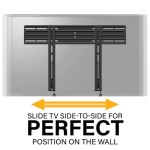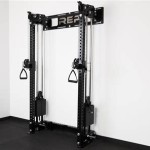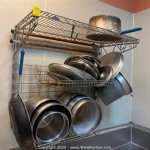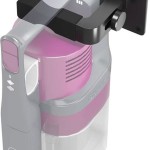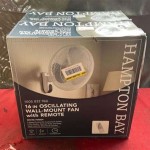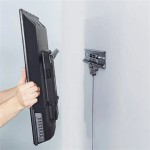How High On The Wall Should You Mount A TV?
Determining the optimal height for mounting a television on a wall is a crucial aspect of home theater design and viewing comfort. The placement significantly impacts the viewing experience, influencing posture, eye strain, and overall enjoyment. Mounting a TV too high or too low can lead to discomfort and a less immersive viewing experience. Therefore, a careful evaluation of factors such as viewing distance, screen size, and typical viewing position is necessary to achieve the ideal TV mounting height.
The decision is not merely aesthetic; it directly affects ergonomics. Incorrect TV height can force viewers to tilt their heads up or down for extended periods, potentially leading to neck pain and stiffness. Proper positioning ensures a natural and comfortable viewing angle, contributing to a more relaxed and enjoyable entertainment experience.
Several considerations should be taken into account to determine the optimal TV height for your specific viewing environment. Understanding these factors will enable a more informed decision, resulting in a more comfortable and visually appealing setup.
Understanding the "Eye-Level" Rule
The most commonly cited guideline for TV mounting height revolves around the concept of "eye-level placement." This principle suggests that the center of the TV screen should be positioned at the viewer's eye level when seated in their primary viewing position. The intent behind this rule is to minimize neck strain by ensuring that the viewer's gaze is directed straight ahead, rather than upwards or downwards.
To implement this rule, a measurement of the viewer's eye height when seated is required. This can be achieved by having the individual sit in their usual viewing chair or sofa and measuring the vertical distance from the floor to their eyes. The resulting measurement serves as the target height for the center of the TV screen. For example, if the eye height is 42 inches, the center of the TV screen should ideally be mounted at a height of 42 inches from the floor.
However, strict adherence to this eye-level rule is not always practical or desirable. Factors such as the size of the TV, the viewing distance, and the presence of other furniture or architectural elements can necessitate adjustments to the ideal mounting height. Furthermore, individual preferences for viewing angle can also play a role in determining the optimal placement.
Adjusting for Screen Size and Viewing Distance
The size of the television screen and the distance from which it is viewed are critical factors in determining the appropriate mounting height. Larger screens generally require a slightly higher mounting position to ensure that the entire screen is comfortably visible without excessive head movement. Conversely, smaller screens may be placed slightly lower to maintain a comfortable viewing angle.
A longer viewing distance necessitates a higher mounting position. When viewers are seated farther away from the screen, a slightly elevated TV height helps to compensate for the increased viewing angle and ensures that the screen remains within the viewer's comfortable field of vision. Shorter viewing distances, on the other hand, allow for a lower mounting position without compromising viewing comfort.
A simple calculation can help determine the optimal mounting height, considering screen size and viewing distance. A commonly used formula suggests that the bottom of the TV should be roughly one-third of the screen's height above the viewer's eye level. For instance, if a 55-inch TV has a height of approximately 27 inches, one-third of that height is 9 inches. If the viewer's eye level is 42 inches, the bottom of the TV should be mounted at approximately 51 inches (42 + 9) from the floor. This calculation provides a starting point for determining the ideal TV height, which can then be adjusted based on individual preferences and specific room conditions.
Considering Room Layout and Furniture
The layout of the room and the presence of other furniture or architectural elements can significantly influence the optimal TV mounting height. Existing furniture, such as media consoles, fireplaces, or shelving units, can dictate the available space for mounting the TV and may require adjustments to the ideal height.
For example, if a TV is being mounted above a fireplace, the height will be largely determined by the height of the fireplace mantel. In such cases, it is crucial to ensure that the TV is not mounted too high, as this can lead to significant neck strain. If the fireplace mantel is excessively high, alternative mounting locations or the use of a tilting TV mount may be necessary to achieve a more comfortable viewing angle.
Similarly, the presence of other furniture, such as media consoles or shelving units, can limit the available space for mounting the TV. In these situations, careful planning and consideration of the furniture's dimensions are essential to ensure that the TV is mounted at a height that is both visually appealing and ergonomically sound. It is often helpful to use painter's tape to simulate the size and position of the TV on the wall before drilling any holes, allowing for adjustments to the mounting height and position as needed.
Beyond furniture, other architectural elements, such as windows or doorways, can also impact the mounting height. It is important to ensure that the TV is not mounted in a location that obstructs windows or doorways, or that interferes with the natural flow of the room. In some cases, this may necessitate a compromise on the ideal mounting height, but it is crucial to prioritize safety and functionality when making these decisions.
In conclusion, determining the ideal height for mounting a TV involves a multifaceted approach that considers factors such as eye-level positioning, screen size, viewing distance, and room layout. By carefully evaluating these factors and taking into account individual preferences, it is possible to achieve a TV mounting height that is both visually appealing and ergonomically sound, contributing to a more enjoyable and comfortable viewing experience.

At What Height Should Your Flat Screen Be Mounted Nextdaytechs On Site Technical Servicesnextdaytechs Services

How High Should A Tv Be Mounted The Plug Hellotech

How High Should Your Tv Be Mounted Reviews By Wirecutter

Tv Mounting Height Calculator

How High To Mount Your Tv For The Perfect Viewing Experience

How High Should I Mount My Tv

How High Should You Mount Your Tv Qualgear Blog

Heightfinder Sanus

Tv Height And Distance

Tv Wall Mounting How High Should You Mount Your And

